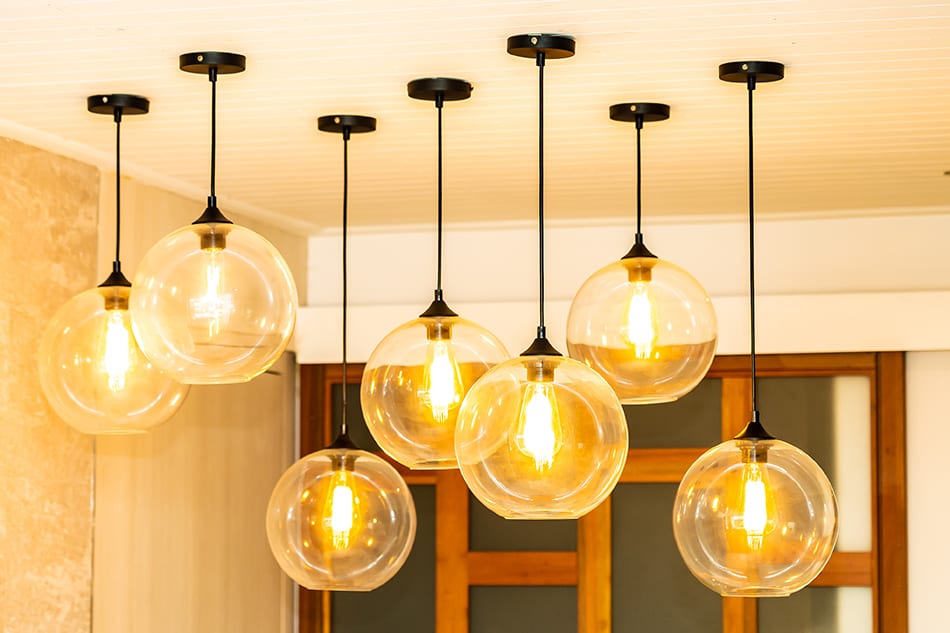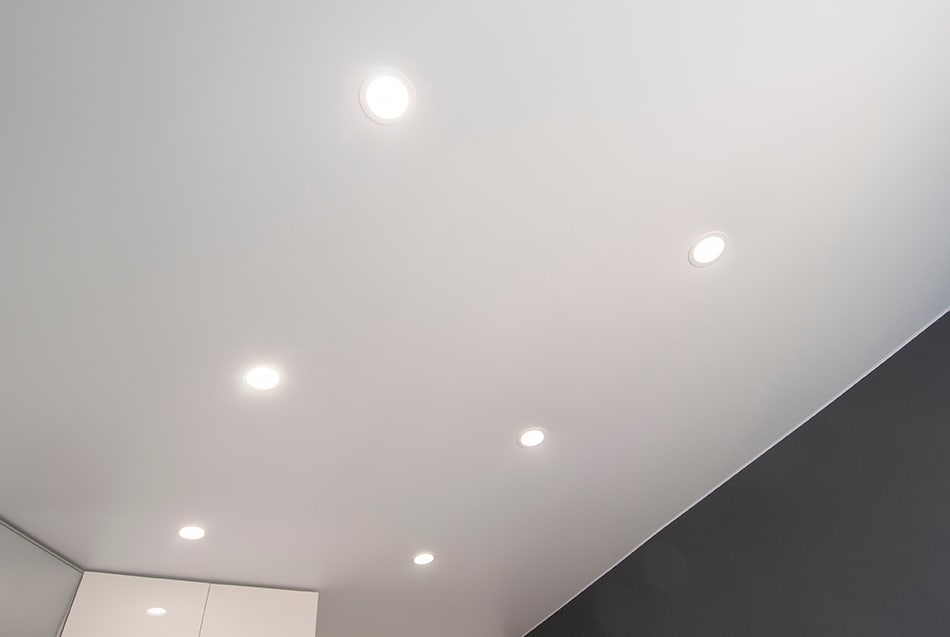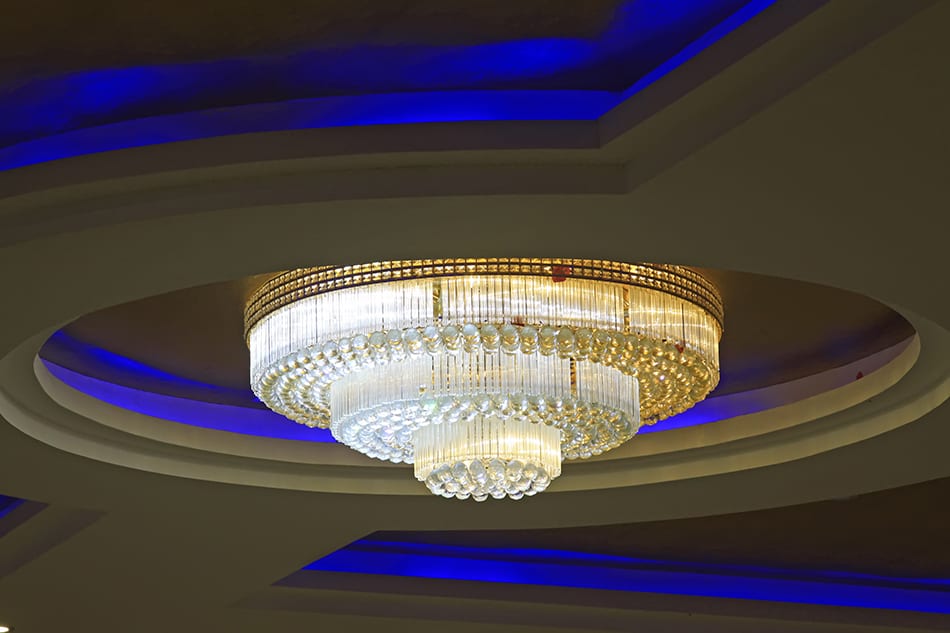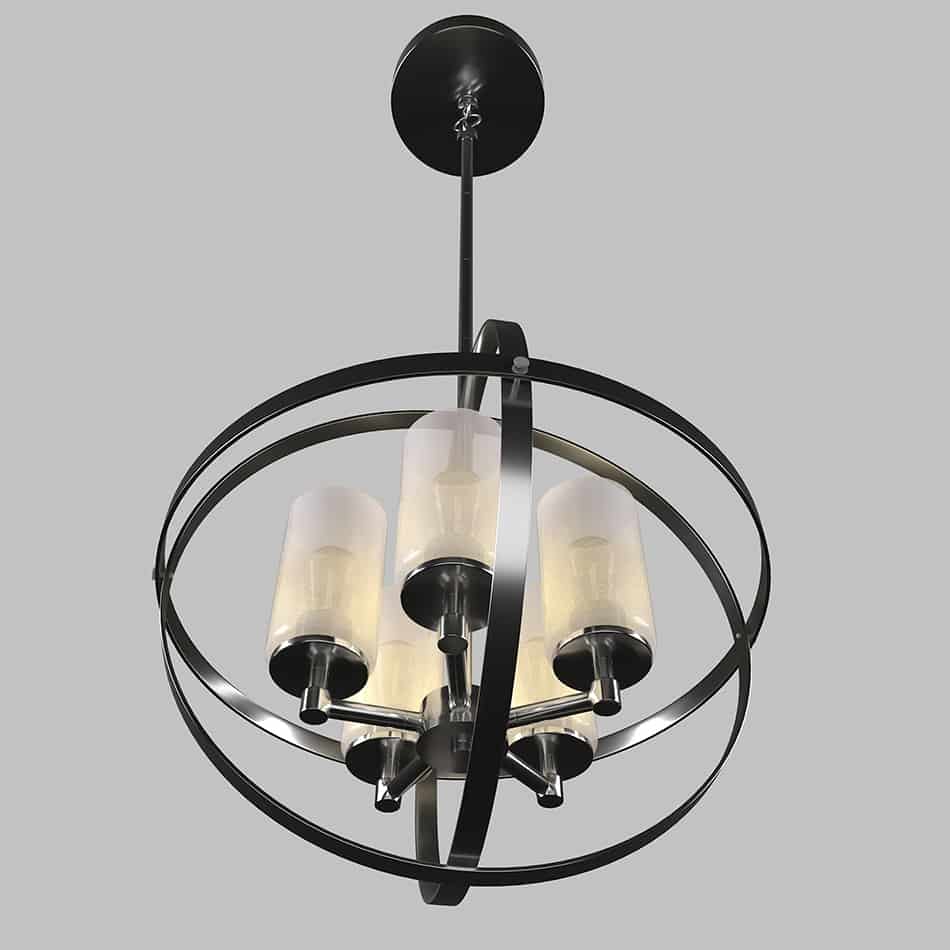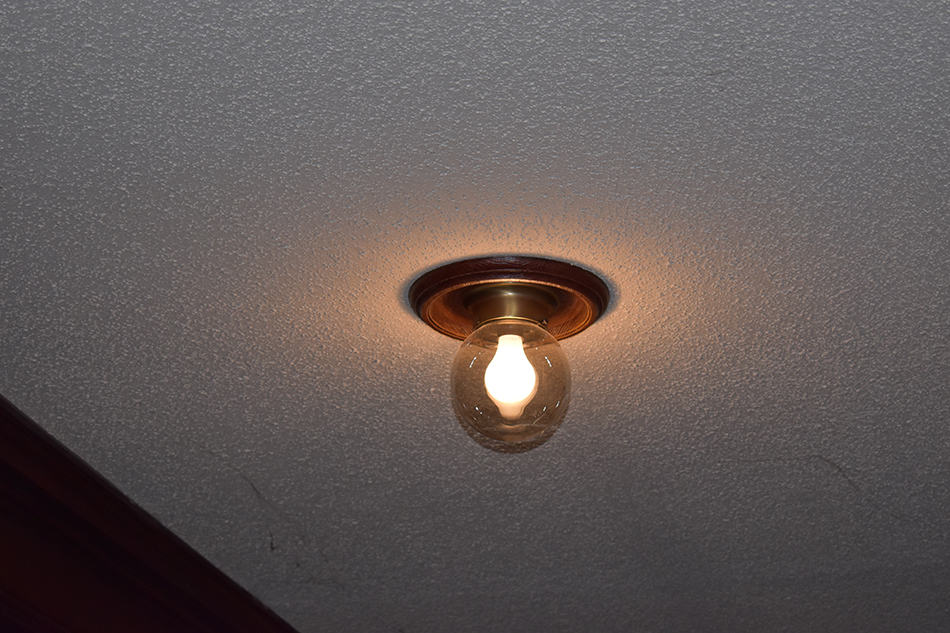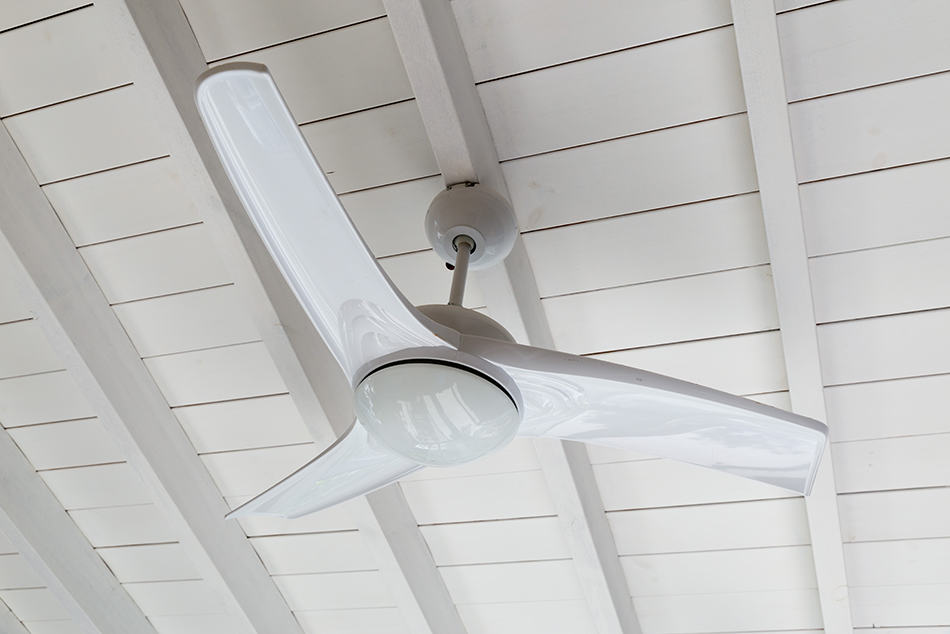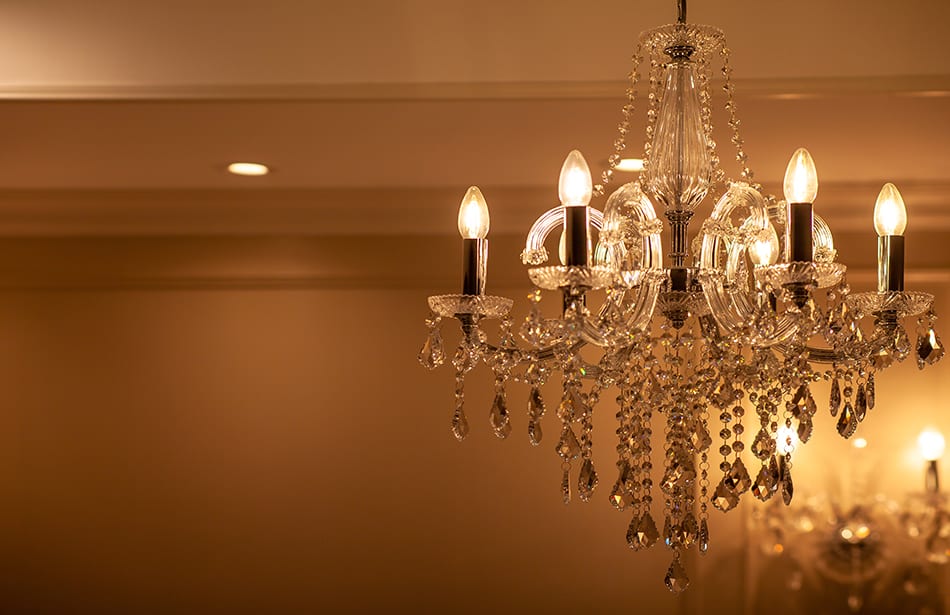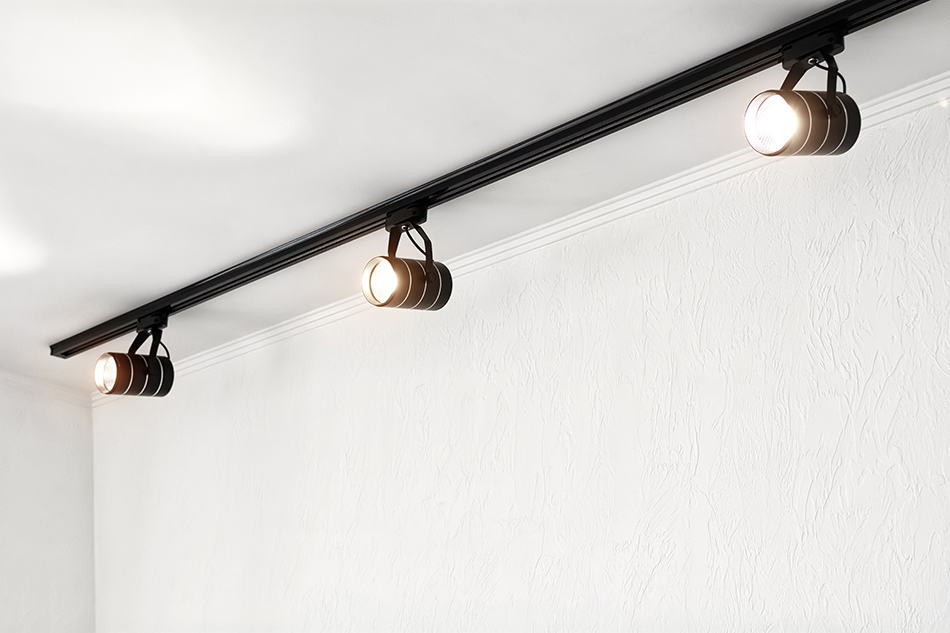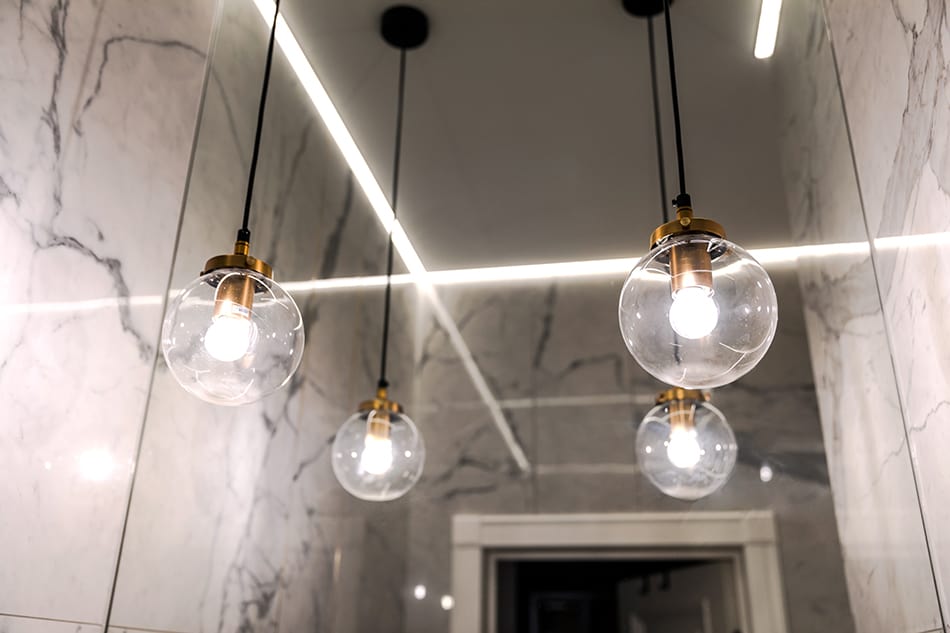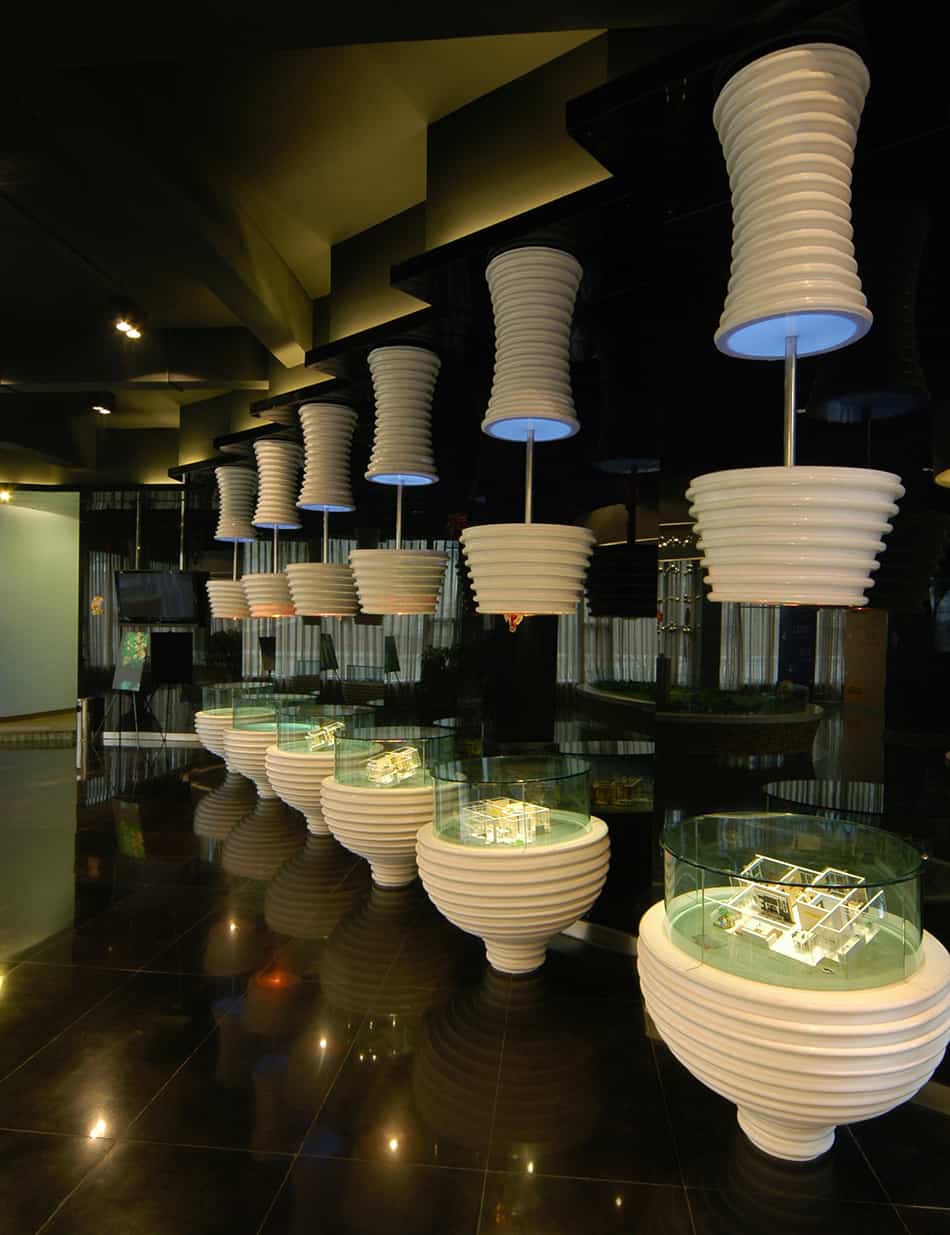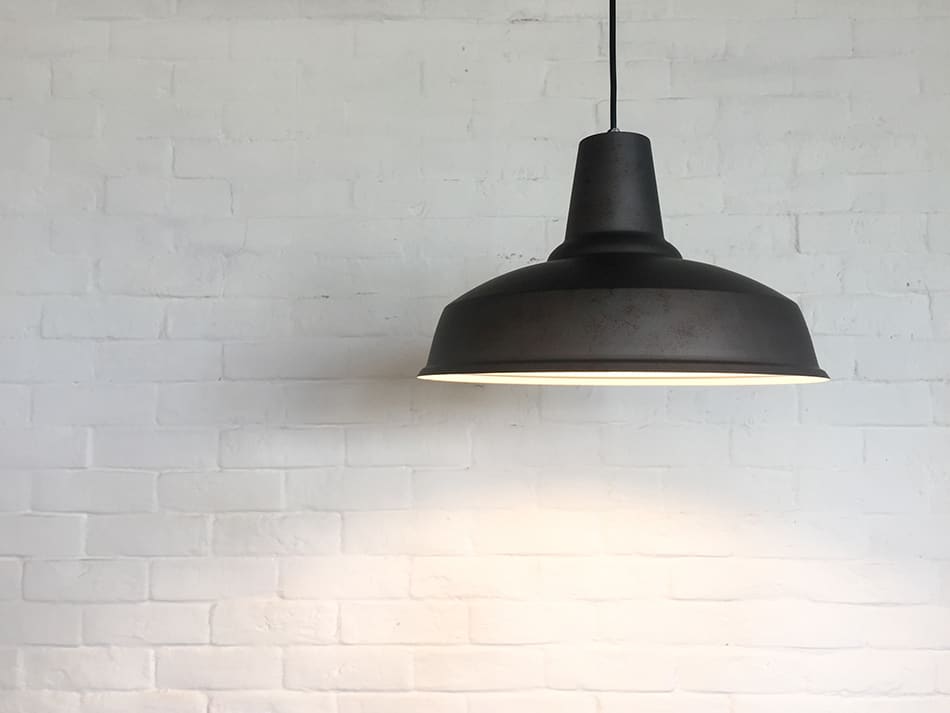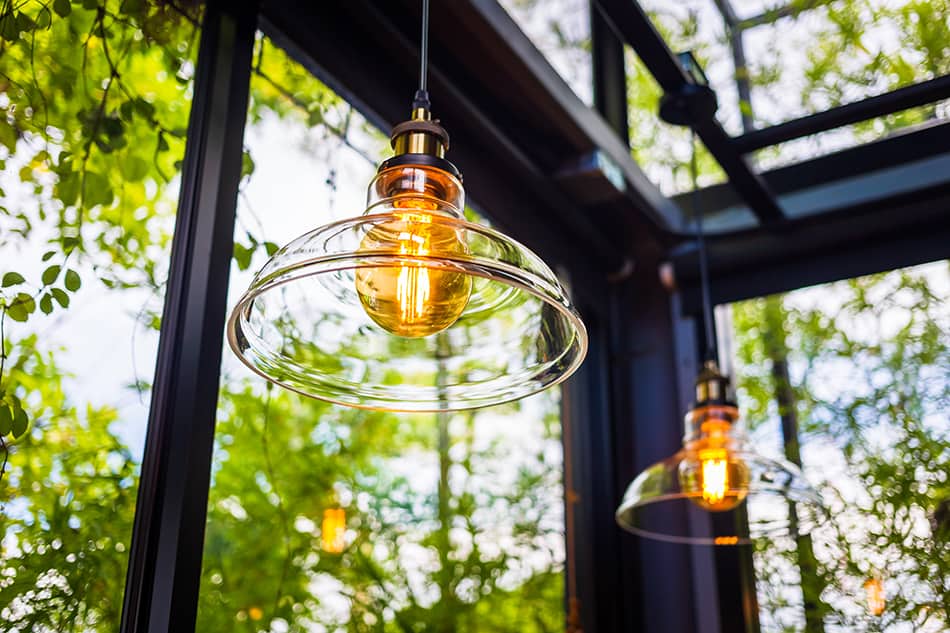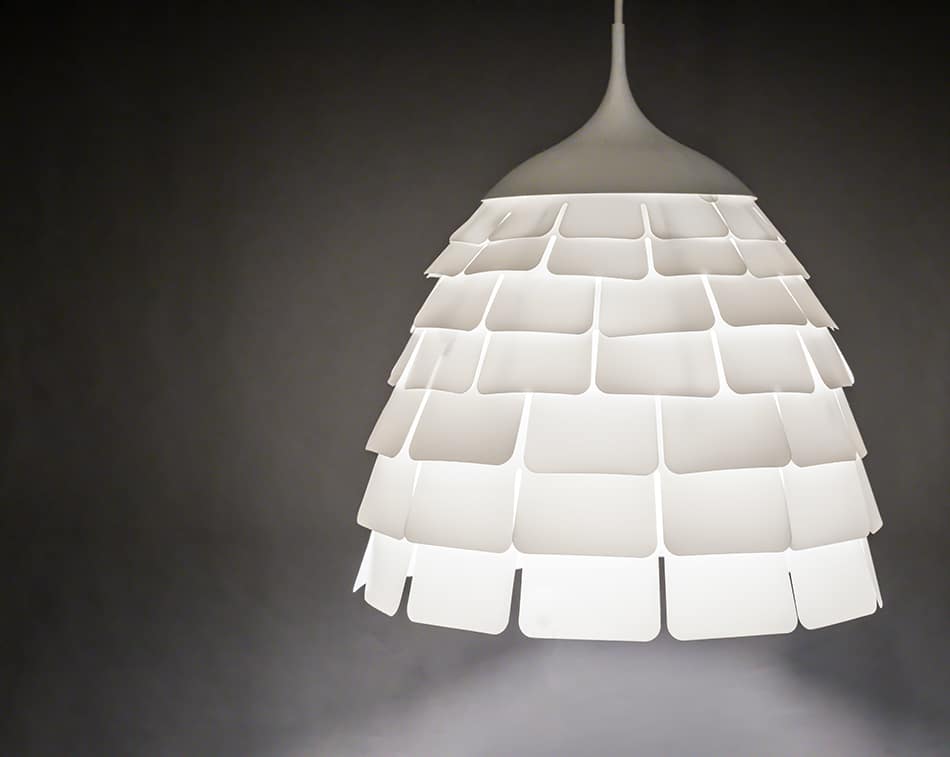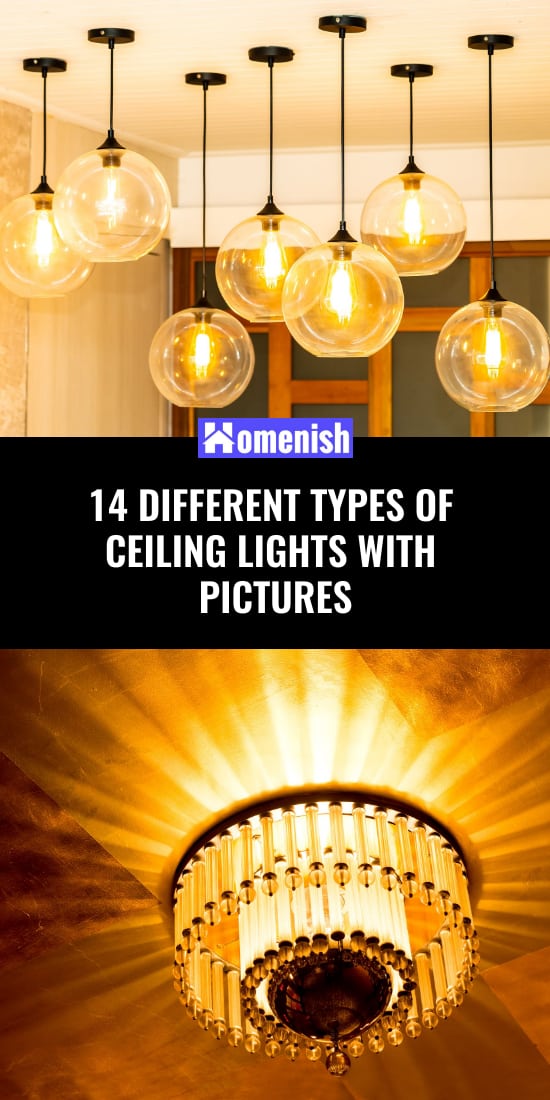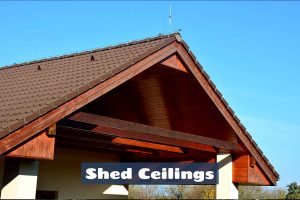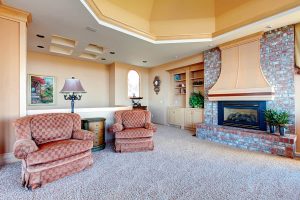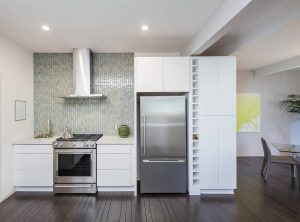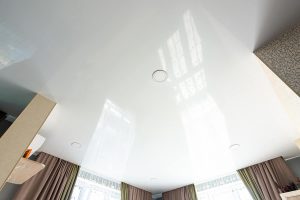Ceiling lights are an often-overlooked area of interior design, but they are vital in helping to create the right sort of ambiance and atmosphere in your home. Choosing the right type of ceiling light can also make all the difference in how usable a room is, and you need to ensure your light is functional and fit for its purpose.
Some types of ceiling lights work better in certain scenarios than others, and understanding the differences between various ceiling lights, as well as their advantages and disadvantages, will help guide you in choosing the perfect ceiling light for your space.
Ceiling Mounted Lights
Ceiling-mounted lights are those that are fixed onto or inside the surface of the ceiling. They include the following.
Recessed Lights
Recessed lights are also known as downlights, spotlights, can lights, and pot lights. As the name suggests, recessed lights are set into your ceiling, and therefore don’t physically intrude into your space.
This makes them a great choice if you have low ceilings such as an attic and don’t want to be hitting your head on ceiling lights or if you simply want a clean look without additional fussiness.
These types of light fitting provide a source of light from an almost invisible fixture. They have become enormously popular over the last decade or so, as they provide excellent ambiance and work with almost any interior style.
This means that even if you change your color scheme or the style of your room, you won’t need to change your lights.
You can also layer these lights to customize the type of light in the room; for a romantic and slightly low-lit room, you can just install one or two recessed lights, or for a workspace where you need good lighting, such as in a kitchen, you can fit a recessed light every two feet along the ceiling.
These lights are fitted by creating small circular holes in the ceiling where the body of the light will be inserted. You’ll need around six inches of clearance above your ceiling level to fit the wiring and other components of the lights.
Recessed lights are especially popular in bathrooms and kitchens but more recently have become commonly used in living rooms, dining rooms, and even outdoor spaces.
The main drawback of these types of lights is that they require a professional to install them, and depending on how many recessed lights you want, this can run into several hundred dollars.
That being said, the cost of the actual lights themselves is reasonably low, and it can add significant value to your home and increase scalability.
Flush Lights
Flush lights are mounted directly against the ceiling and most commonly come in half-sphere shapes. These types of lights are very common in North America, and much less so throughout Europe. They are popular for a series of reasons.
They are very versatile and provide a good amount of light while still being relatively discreet. They don’t make too much of a statement, as they are held against the ceiling and therefore don’t protrude much into the room. They are generally quite neutral looking and can be found in both traditional and modern styles.
Flush lights are easy to install, and most can be mounted by the user in the space of just a few minutes. Flush lights vary in cost, but if you are on a tight budget, then these can be a good option because some basic flush lights can be purchased for under $20.
If you want a larger or more stylish model, these can cost upwards of $100. They work well at dispersing light and can provide optimal lighting in a variety of room types. They are especially good for children’s rooms because they don’t feature any dangling pieces, and they are impossible for a child to hurt themselves on.
Due to their nature of being mounted against the ceiling, these are lights that work well in rooms with low ceilings. If you have very high ceilings, then flush lights should be avoided because they can look too insubstantial in a large space.
Flush lights direct all of their light downwards and, depending on the light bulb you use, can give off a calming, low light or a more functional, bright light.
Semi-Flush Lights
These lights have their fixture fitted to the ceiling and then extend a few inches lower into the room. They are a cross between flush lights and pendant lights.
Like flush lights, they take up very little space and can work well in a range of scenarios, but unlike flush lights, they are able to direct their light in every direction, rather than just downwards. This makes them better suited to creating a vibrant, brightly lit environment rather than flush lights.
The main difference in terms of directional lighting is that semi-flush lights will illuminate the ceiling, whereas flush lights will keep the ceiling in relative darkness. Semi-flush lights come in a wide range of styles, with a greater variety of choices than flush lights.
They typically hang between four and eight inches below ceiling level, so they are more noticeable than flush lights while still managing to not get in the way of headspace.
These lights can easily be fitted at home by the user and do not require any special knowledge or experience. They also make it very easy to change light bulbs.
Utility Lighting
These are no-frill light fittings that are most suited for use in workshops, garages, and basements. They used to be commonly found in kitchens, but these days have been replaced with upgraded interior lights that have a softer feel.
These types of lights are generally inexpensive to buy, and they sit flush against the ceiling. They are typically several feet long, shaped like a long bar, but can come in a variety of sizes to suit varying needs.
Utility lighting has an industrial feel that is noted for its functionality more so than its visual appeal. Though utility lighting might seem like a minor upgrade for your garage or workshop, it provides superior light that can completely transform a workspace and make it considerably more usable.
For greater energy efficiency, if you spend a long time in your workspace, opt for LED bulbs that will last longer, cost less, and provide very bright light.
Ceiling Fans
Ceiling fans are a combination of both a light fitting and a fan, which is mounted to the ceiling. As they serve two purposes, they can be considered something of a money saver, offering the user both light and the means to lower the temperature in a room.
While ceiling fans are very popular, especially in warmer climates, the light they offer is usually ambient at most. They do not give off as much light as even a flush mount light fitting and are not ideal in areas where good visibility will be needed, such as in a kitchen. They work well in bedrooms and living rooms, where ambient lighting is more appropriate.
However, there is debate around how effective these are. Some claim that they are able to lower the temperature by between four and five degrees in a room, while others claim that the temperature remains unaffected, but instead, the fans circulate air in the room to give the feel of being cooled down when moving air hits the skin.
Either way, many people in warm climates rely on different types of ceiling fans to relieve them of still, hot air during the summer months, and they use much less energy compared to air conditioning units. They are also able to heat up a room during cooler months.
Instead of pushing air downwards to create a breeze, you would switch the fan into a different mode so that the blades rotated in the opposite way.
This would draw cool air upwards, ensuring warm air stays at a level where it can be better appreciated. Ceiling fans also help to distribute heat more effectively, meaning your home heating systems won’t have to work so hard.
Hanging Ceiling Lights
Hanging ceiling lights are pendulous and drop down from the ceiling. Types of hanging ceiling lights include:
Chandeliers
A chandelier is a hanging light that is highly decorative. These lights typically have several arms or branches where numerous candles or light bulbs will be fitted. The more branches a chandelier has, obviously, the more light it will give off.
Chandeliers are most common in dining rooms, though they will sometimes be used in living rooms as well. Their large and ornate nature tends to make them something of a centerpiece, and they are perfect for making a feature of a dining table and making the center of the room its focus.
When hanging a chandelier above a dining table, you should make sure that it sits at around two and a half feet above the surface of the table. This is so that the chandelier has a place of focus and dominance, but also so that it doesn’t get in the way of anyone’s line of vision while seated at the table.
An impressive chandelier in a dining room can help to set the tone of the space, creating a vibe that is formal or sophisticated, depending on the design of the chandelier.
Traditional chandeliers would have held candles, but this is rarely found now, and instead, they use lightbulbs or LEDs. Chandeliers can be suspended from the ceiling via a chain to give a more classic look, while more modern chandeliers tend to have a fixture that is mounted to the ceiling, and this will result in chandeliers that are held closer to the ceiling.
Track Lighting
This type of lighting can be suspended from the ceiling or mounted closer to it. It features a rail or track that individual lights are positioned along. There is a huge scope in varying designs for this type of lighting, though they are generally all made from metal or metal and glass.
For budget functionality, basic track lights can be picked up at low prices, or for a more design-led choice, there are many ultra-modern styles of track lighting that can make a great impact on a room.
Due to the output of light this type of fixture gives off, they are very popular in a wide range of rooms where good visibility is essential, such as in kitchens, bathrooms, offices, and children’s bedrooms.
On many track lighting fixtures, each individual light can be angled in a specific direction so that you can customize which areas of the room are the best lit. Suspended track lighting is a great alternative to chandeliers or pendant lights over kitchen islands or dining tables, providing bright lighting with a very modern edge.
Pendant Lights
Pendant lights typically hang quite low, so they are best suited over surfaces, such as hanging over a kitchen island, a dining table, or a desk. They are similar to chandeliers in that they hang down over an area, but while chandeliers have many bulbs and can therefore give off plenty of light, a pendant light will only have one bulb and therefore provide less light in comparison.
Pendant lights come in an enormous variety of styles and designs. Bare light bulb pendant lights have gained popularity in recent years for interiors that have an industrial vibe.
Metal pendant lights are also popular for hanging over kitchen islands, giving the feel of a diner cafe. Pendant lights are also compatible with fabric shades, which are a nice option for bedrooms as they give the room a soft and cozy feel.
Fabric pendant lights provide more ambient light compared to metal or glass pendant lights as the light diffuses through the fabric and therefore has less of glare.
For smaller areas, such as an entrance hall or corridor, mini pendant lights can be a great feature. You can use several in a row to provide good lighting, and they also add a touch of style to a space that would otherwise be quite bare, as these spaces typically won’t feature furniture or other accessories.
Inverted Pendant Lights
Inverted pendant lights hang from the ceiling and can be adjusted to sit at a height that is appropriate for the room. Inverted pendant lights are just like standard pendant lights, except the lamp part is facing upwards, like a bowl. This means that the light given off by the fixture is directed upwards and will illuminate the ceiling.
These are good for creating ambiance or a mood in a room, but it makes them inappropriate for providing functional light in areas where you need good vision. If you have a feature on your ceiling, such as crown molding, then this type of light fixture will draw attention to it and make it a focus.
These lights can also make small rooms appear bigger than they actually are. While most inverted pendant lights are bowl-shaped, some other designs are available in more modern styles.
Ceiling Light Materials
Fabric
Fabric light fixtures can be attached to pendant lights or semi-flush lights. One of the great things about this type of light is how affordable it is. You can pick up small fabric lights for just a few dollars, and even the higher quality examples will rarely cost as much as $50, making them a great choice for anyone wanting to update their interior on a budget.
Fabric lights are also able to make a room feel much warmer, which is a result of having a soft fabric surface covering your light as opposed to a hard material such as metal or glass. The presence of fabric around your light adds a cozy feeling to a space.
Fabric lights help create mood lighting, as the fabric disperses and dilutes the light given off from the bulb, creating more ambient light. This makes them very popular in bedrooms, where a softer light is more popular. However, fabric lights can also be well utilized in living rooms and dining rooms, especially if used in conjunction with lamps.
The color and density of the fabric on your light shade will determine what type of light it gives off, so pay attention to this when choosing a fabric light. Darker fabrics will absorb more of the light and therefore create a more dimly lit atmosphere than lighter colored fabrics.
Cotton or linen shades will give the room an airy, cool, and natural vibe, whereas velvet or silk shades will have a more romantic appeal.
Metal
Many types of light fittings are made from metal, as this is a durable and relatively inexpensive material. Metal light fittings have become increasingly popular over recent years, especially metal that has been sprayed black or copper-colored.
This is because these metals have an industrial appeal that works well in an array of modern styles. If you opt for track or rail lighting, then these are primarily made from metal and come in a number of finishes.
The most common finish of metal for these types of light fitting is stainless steel, satin steel, or painted black or white. You will also find gold-colored metal light fittings, though these are less common.
Many pendant lights are also available in metal, as dome-shaped fixtures that emulate the types found in old-fashioned American diners. These fittings are very popular for the style they add to a room and also because they are fairly inexpensive.
Metal light fittings are much easier to clean than fabric or glass lights because they can be easily wiped down with a wet cloth or a duster. Comparatively, dust tends to cling to fabric lights and can be difficult to remove.
Glass
Most types of flush lighting and semi-flush lighting are made from glass. This is generally an obscured glass to provide less harsh, more ambient lighting. You can also get colored glass or stained glass lights if you are wanting to inject some character into your decor.
Similarly, glass is a great choice if you want your light fitting to blend in seamlessly without drawing any attention. Glass is a material that will work with a wide range of decors, and depending on the design, it can be modern or traditional.
Pendant lights can also be made from glass, and these are an especially good choice if you want a good balance between style and functionality because glass is much better at dispersing light than metal pendant light alternatives.
One of the main drawbacks of glass lighting is that it can easily look dirty because any dust that collects on glass is very obvious. Glass lights will need to be cleaned quite frequently to maintain a good appearance, ideally with a smear-free spray and cloth to avoid wipe marks.
The other disadvantage of glass lighting is that it is less durable than its counterparts and can smash or shatter if knocked. Take extra care when moving furniture around glass light fittings to avoid knocking them and causing damage.
It’s also best to avoid pendant glass lighting in children’s bedrooms, though flush glass lighting is fine because it cannot be reached.
Crystal
Crystal is the material of choice for chandeliers, though it is also sometimes used in semi-flush lighting. Crystal gives a sophisticated and formal feel to a space, and quite often, it can come with a hefty price tag to match.
The facets of a crystal can disperse light in a very interesting way throughout a room, creating small pockets of light on walls and other areas where light bounces off the crystals.
Plastic
Plastic light fittings are not common, but they are available. They are typically found on pendant lights and are sprayed in a way to give the impression that they are metal.
Plastic lights such as this can be useful if you are trying to save money because they are typically the most inexpensive type of light fitting. They are also more lightweight than metal.
